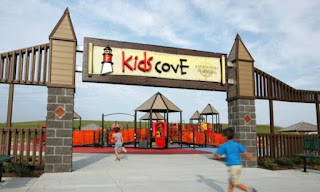12 Days of Earth Day Recap
For the first two weeks of April, we brought you the 12 Days of Earth Day as a lead up to our annual celebration. With tips, tricks, and fascinating facts about Earth Day, the environment, and recycling, we hoped to inspire you to make some small changes to your daily routines and approach to caring for our planet. In case you missed them, here’s the complete list:
1. Earth Day was founded by Senator Gaylord Nelson on April 22, 1970; 20 million people participated in the first Earth Day. Hampton Roads celebrated Earth Day for the first time in 1990. View Walter Cronkite’s special Earth Week report from 1970.
2. More than 100 billion pieces of junk mail are delivered in the United States each year. Do your part by stopping, recycling or shredding your junk mail.
3. Shutting down a computer when it’s not in use
cuts the energy consumption by 85 percent, so make sure you turn your devices
off when not in use!
4. The U.S. buried or burned more than 166 million TONS of resources – paper, plastic, metals, glass, and organic materials in landfills and incinerators last year. Do your part by recycling what you can instead! Learn what items can be recycled here in VB. Test your knowledge with this recycling quiz.
5. There are many ways to participate in Earth Day online, including crafting these DIY projects, joining these virtual tours and watching these “Ed” Talks on eco-centric practices.
6. For every mile walked instead of driven, nearly one pound of pollution is kept out of the air. Consider taking more bike rides or walks to your destinations!
7. The Earth is 70% water, but only .01% of that is drinkable. Instead of disposing of over-the-counter and prescription drugs in the trash or flushing down the toilet, help keep the drinkable water clean. Learn more about the Virginia Beach Police department’s Medication Take-Back program.
8. Plastic in the oceans kills about 1 million animals each year. A simple swap is using a reusable water bottle instead. Learn more about the Virginia Aquarium's conservation efforts to protect ocean life by taking a virtual field trip.
9. Read, return, repeat! Libraries have always set
an example in green practices, as a single book might be shared by hundreds of
people - and even more now with e-books and digital media. Libraries also offer
many resources for sustainable living. Here are a few suggestions from our
friends at Virginia Beach Public Library.
10. On average, each person tosses out 4 pounds of garbage per day. Consider packing reusable containers with leftovers and be mindful of buying items with extra packaging to help cut down on your individual impact.
11. Hazardous household waste (HHW) includes leftover household chemicals that can be toxic such as paints, cleaners, oils, pool chemicals, pesticides, automotive fluids, fertilizer and more. HHW has the potential to cause injury to sanitation workers and contaminate septic tanks or wastewater treatment systems if poured down drains or toilets. Check out these local recycling programs & services.
12. Mount Trashmore Park was the brainchild of Roland E. Dorer, a former director of the Virginia Department of Health, Insect and Vector Control. Mount Trashmore used to be the site of a landfill and is built on a pile of 640,000 tons of trash. Standing 60 feet high, it is the highest point in the city! Opened in 1974, Mount Trashmore Park is not only Virginia Beach’s most popular recreational facility, but an innovative waste disposal solution. Dive into the online resources about the landfill-to-landmark transition for this popular park, including this archived The New York Times article.
 |
| Park visitors enjoying the breeze and view from atop Mount Trashmore. |


Celebrate Earth Day from home. As we have a variety of virtual Earth Day event ideas to make your earth day virtual celebrations 2022 super exciting.
ReplyDelete